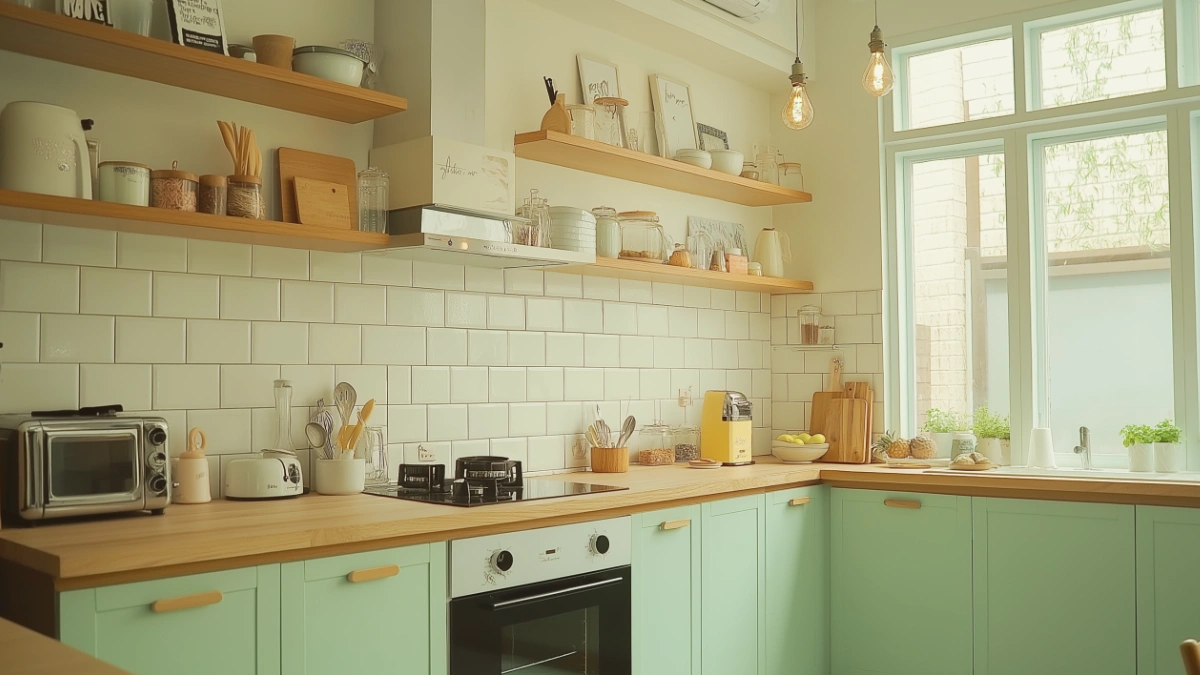Kitchen Color Schemes for Small Spaces: Making the Most of Your Area
Table of Contents
Kitchen Color Schemes for Small Spaces: Making the Most of Your Area
Small kitchens often pose a challenge when it comes to design. While the size might limit your layout options, it doesn’t have to restrict your style. In fact, choosing the right kitchen color scheme for a small space can completely transform how open, bright, and functional it feels. Color is a powerful design tool—it can reflect light, draw the eye upward, create harmony, and even make a tight room feel more spacious.
According to interior design experts, lighter tones visually expand a space, while darker shades add sophistication and contrast when used thoughtfully. But it’s not just about light or dark—it’s about balance. The textures, finishes, and color combinations you choose all work together to either enhance or restrict your space.
This guide explores the best kitchen color schemes for small spaces, whether you’re working with a galley layout, a kitchenette, or an open-plan concept. From soft neutrals and two-tone cabinets to bold backsplash accents and calming blues, you’ll find inspiration and practical advice to make the most of your kitchen’s footprint. Let’s dive into how color can help small kitchens live large.
Soft Neutrals to Expand the Visual Space
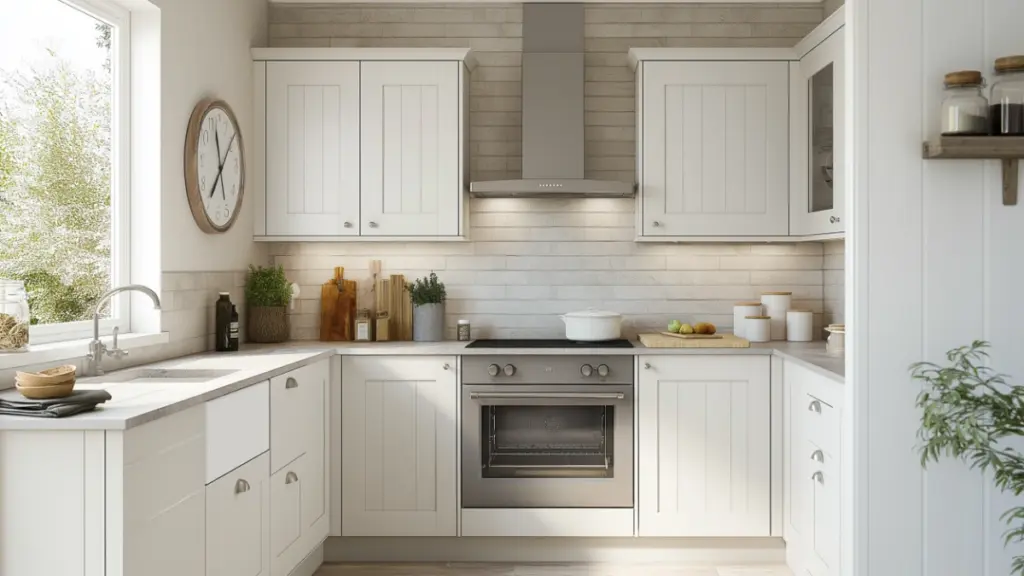
Neutrals are a go-to choice for small kitchens for good reason: they reflect light and create the illusion of openness. Colors like white, cream, and soft gray make walls and cabinetry feel like they recede, allowing the space to breathe.
How to Use Neutrals Effectively
- Opt for white or off-white upper cabinets to draw the eye upward
- Choose satin or eggshell finishes that bounce light around the room
- Layer warm and cool neutrals to add depth without visual clutter
Neutral Palette Comparison Table
| Neutral Shade | Undertone | Best Application |
|---|---|---|
| Warm White | Creamy/Yellow | Walls, cabinetry |
| Light Gray | Cool/Blue | Backsplash, lower cabinets |
| Greige | Beige + Gray | Countertops or open shelving |
Mixing these tones allows you to create contrast while keeping the overall feel light and cohesive.
Bold Accent Colors to Add Personality
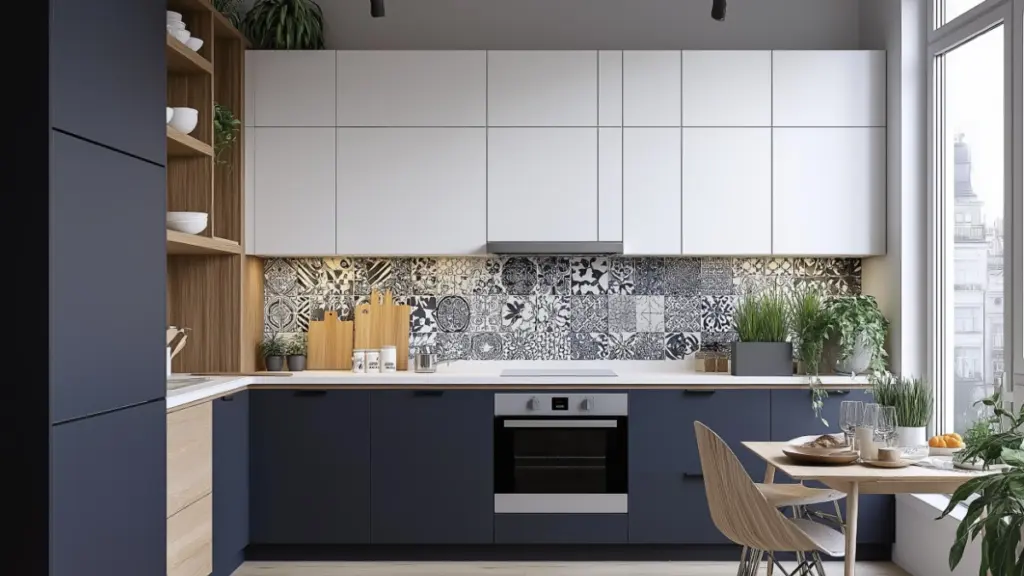
While neutrals create openness, accent colors bring life and personality to your kitchen. Strategic use of bold hues on backsplashes, cabinetry, or walls can provide visual interest without overwhelming the room.
Best Practices for Bold Accents
- Use bold colors on just one element (e.g., island base or backsplash)
- Pair vibrant shades with a mostly neutral palette
- Choose tones that complement natural light levels in your space
Accent Color Ideas
| Accent Color | Where to Use It | Impact |
|---|---|---|
| Navy Blue | Lower cabinets or island | Sophisticated and grounding |
| Terracotta | Backsplash or wall section | Earthy warmth and energy |
| Forest Green | Pantry door or decor items | Natural and calming |
By using bold accents thoughtfully, you keep the kitchen feeling dynamic but not chaotic.
Two-Tone Cabinets for Depth and Balance
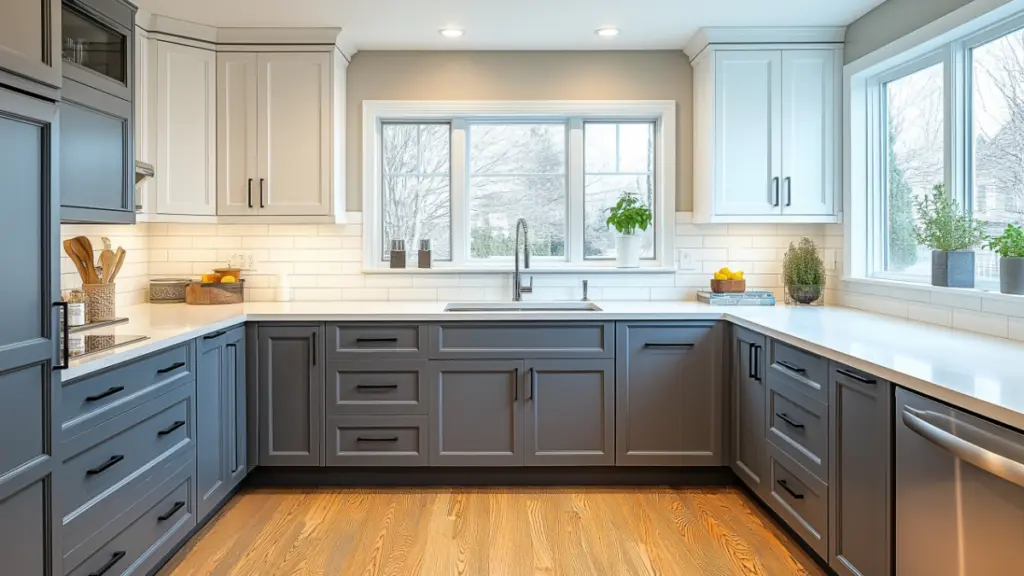
Two-tone cabinetry is a clever solution for adding both contrast and cohesion in small kitchens. This design technique can create the illusion of height, define zones, and reduce visual heaviness.
How to Style Two-Tone Cabinets
- Use lighter shades on upper cabinets to open the space
- Ground the room with darker hues on base cabinets
- Incorporate warm woods or natural materials as a neutral anchor
Popular Two-Tone Combinations
| Upper Cabinets | Lower Cabinets | Overall Effect |
|---|---|---|
| White | Slate Gray | Classic, clean, and spacious |
| Soft Blue | Navy | Calming with rich contrast |
| Cream | Warm Oak Wood | Organic and timeless |
This method offers flexibility and helps you tailor the space to your taste and needs.
Warm Wood Tones for Natural Coziness (Expanded Section)
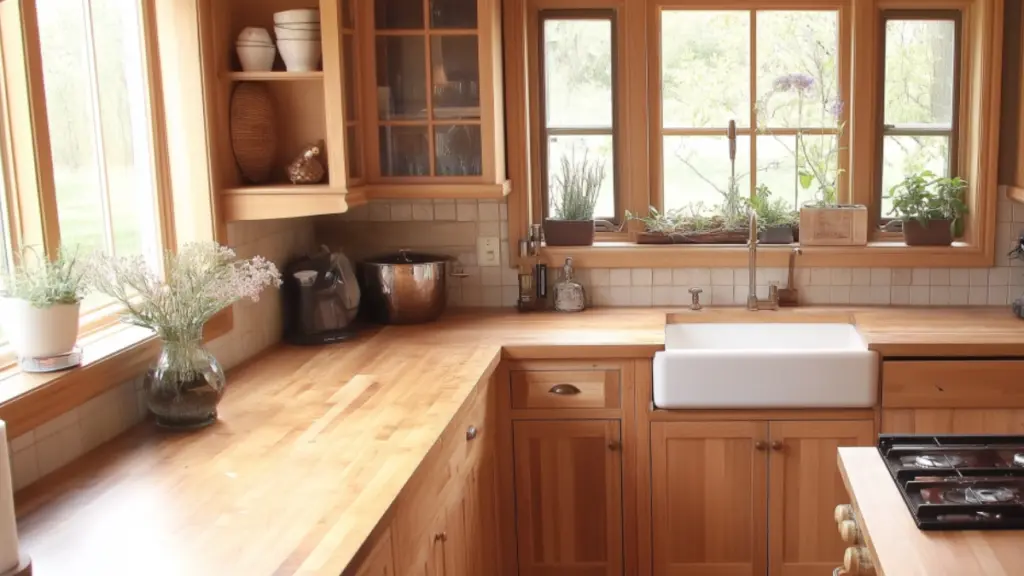
Natural wood finishes are perfect for small kitchens because they add texture, warmth, and a timeless quality. Whether used in cabinetry, open shelving, or flooring, warm wood tones soften sterile spaces and enhance coziness without shrinking the room visually.
Best Ways to Use Wood in Small Kitchens
- Opt for butcher block countertops to bring organic warmth
- Choose medium-toned wood cabinets to avoid overpowering the space
- Use floating wood shelves to create depth while keeping walls open
Balancing Wood with Other Finishes Wood pairs beautifully with light stone, brass, or matte black hardware. Keep surrounding walls or cabinetry light to allow wood elements to stand out without dominating the space.
Wood Tone Application Guide
| Wood Tone | Suggested Use | Complements Well With |
|---|---|---|
| Light Oak | Floating shelves, trim | White quartz, brushed nickel |
| Honey Maple | Cabinetry, flooring | Greige walls, matte black accents |
| Walnut | Island top, focal area | Cream cabinets, brass hardware |
Choosing the right wood finish can tie your entire color scheme together, adding visual richness while maintaining an open feel.
Pastel Palettes for a Light and Airy Feel
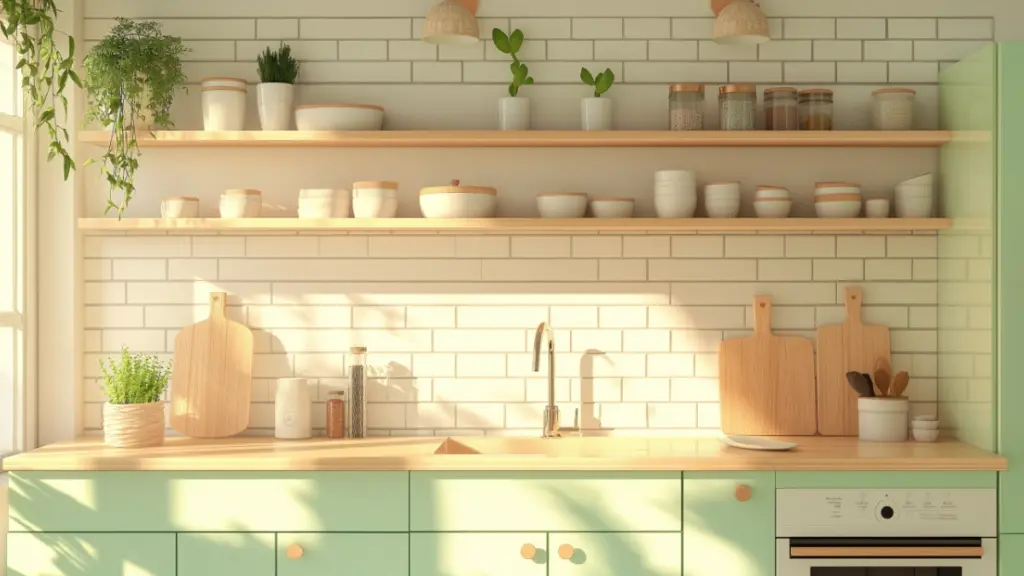
Pastel hues are ideal for small kitchens because they bring a sense of serenity and freshness. Unlike bold brights, pastels reflect light softly and enhance openness while still adding color.
How to Work with Pastels
- Choose one main pastel and pair it with neutrals
- Keep cabinetry simple to let color shine
- Use satin finishes to maintain reflectivity
Top Pastel Color Combinations
| Main Pastel | Neutral Pairing | Mood Created |
|---|---|---|
| Mint Green | White or greige | Cool and calming |
| Powder Blue | Light oak or beige | Airy and nostalgic |
| Blush Pink | Soft gray | Gentle warmth and charm |
Pastels also pair well with brass and gold fixtures, adding a touch of elegance to their playful vibe.
Monochromatic Schemes for Seamless Flow
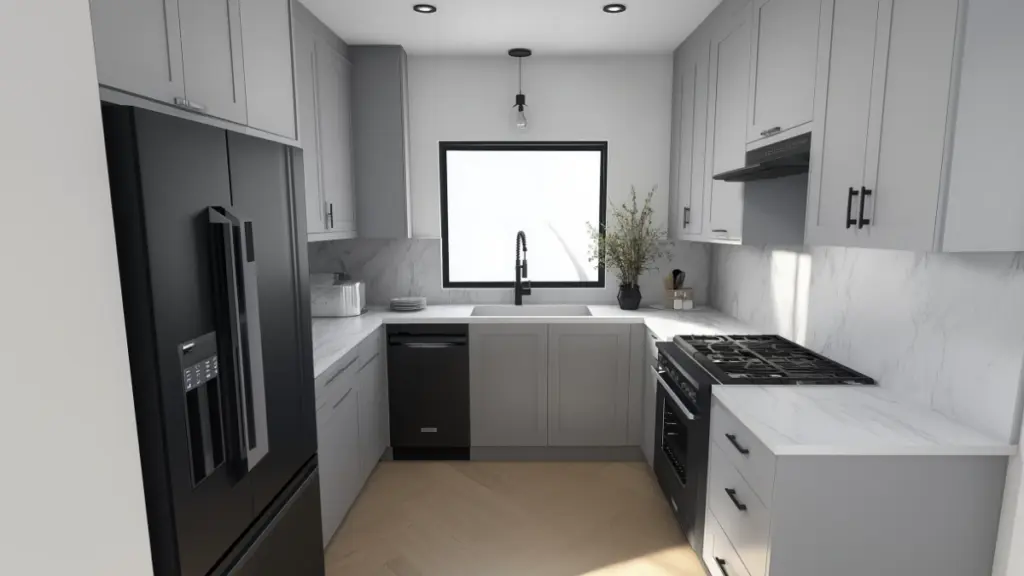
Monochromatic color schemes—where the entire space is done in variations of a single color—can work wonders in small kitchens. They simplify the visual field and make the room appear larger and more unified.
Monochrome Design Strategy
- Use varying shades and textures to create depth
- Keep contrast subtle to avoid breaking up the space
- Add interest with patterns, hardware, and natural materials
Monochromatic Color Examples
| Base Color | Complementary Shades | Visual Effect |
|---|---|---|
| Soft Gray | Charcoal, silver, greige | Sleek and modern |
| Beige | Sand, ivory, light brown | Warm and cohesive |
| Blue-Green | Seafoam, teal, dusty mint | Soothing and harmonious |
Monochrome schemes make compact kitchens feel curated and purposeful without over-designing them.
Statement Backsplashes for Style in Small Doses (Expanded Section)
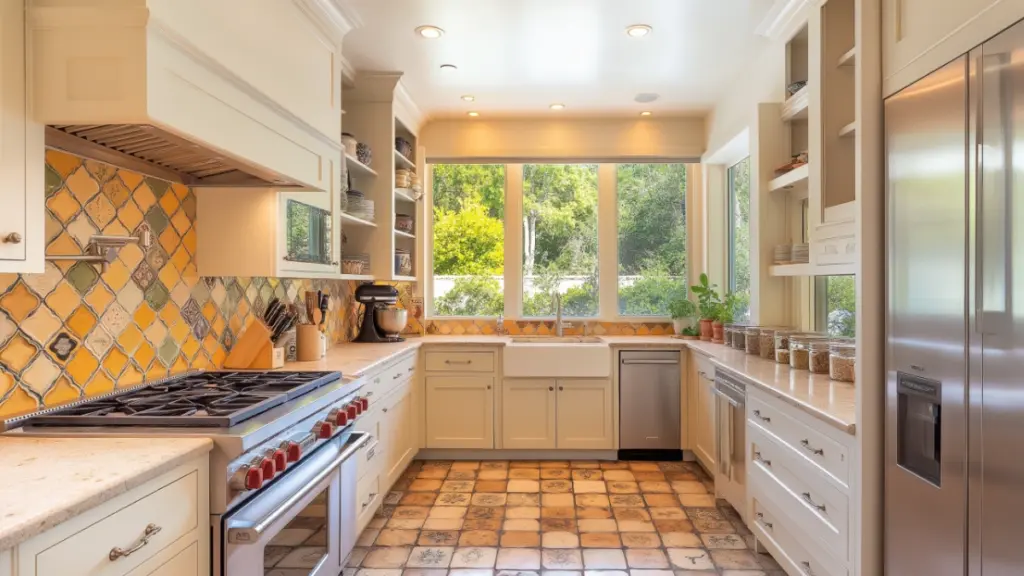
In small kitchens, backsplashes offer the perfect opportunity to make a big impact without overwhelming the space. Because they typically cover a limited area, you can experiment with color, pattern, or texture to add flair and personality.
Types of Statement Backsplashes
- Bold geometric tiles in black and white or rich hues
- Hand-painted zellige or encaustic tiles for artisan charm
- Vertical or herringbone layouts to add visual height
Where to Place Statement Tiles Focus your backsplash behind the stove, sink, or along one wall. These focal points create interest and help define zones without cluttering the space.
Backsplash Style Table
| Tile Style | Effect | Pair With |
|---|---|---|
| Subway Tile (vertical) | Elongates the wall | Monochrome cabinetry |
| Moroccan Zellige | Adds artisanal depth | Brass fixtures, open shelving |
| Patterned Cement | Makes a bold statement | Neutral walls, minimal accents |
Backsplashes allow for personality, helping small kitchens express big style without encroaching on floor space.
Conclusion
A well-chosen kitchen color scheme can completely transform how a small space feels and functions. Whether you’re drawn to airy neutrals, calming pastels, or earthy wood tones, your color choices have the power to open up your kitchen, enhance natural light, and make everyday cooking feel more inspiring. Through thoughtful combinations of cabinetry, backsplashes, and accents, even the smallest kitchen can shine with personality and purpose.

